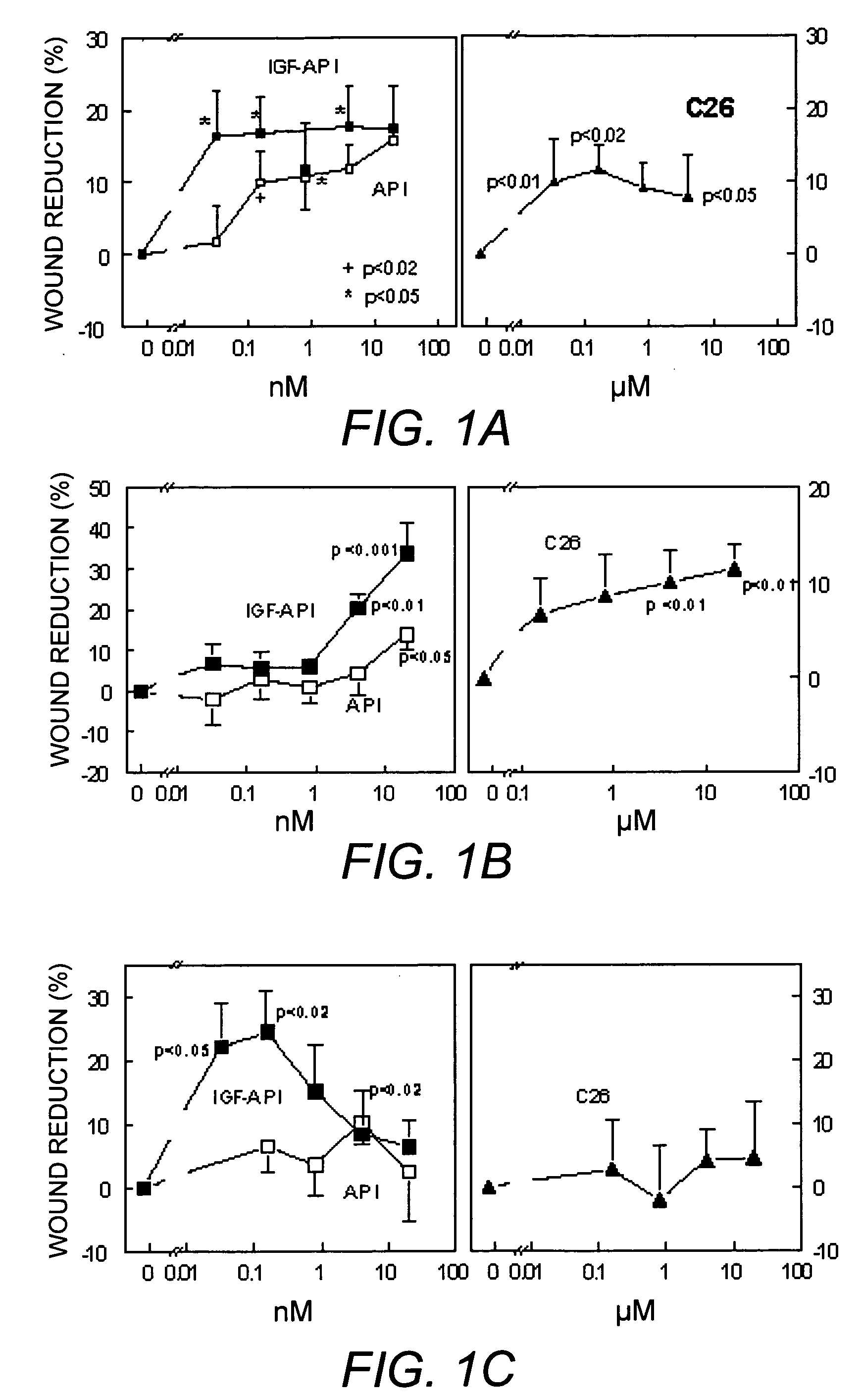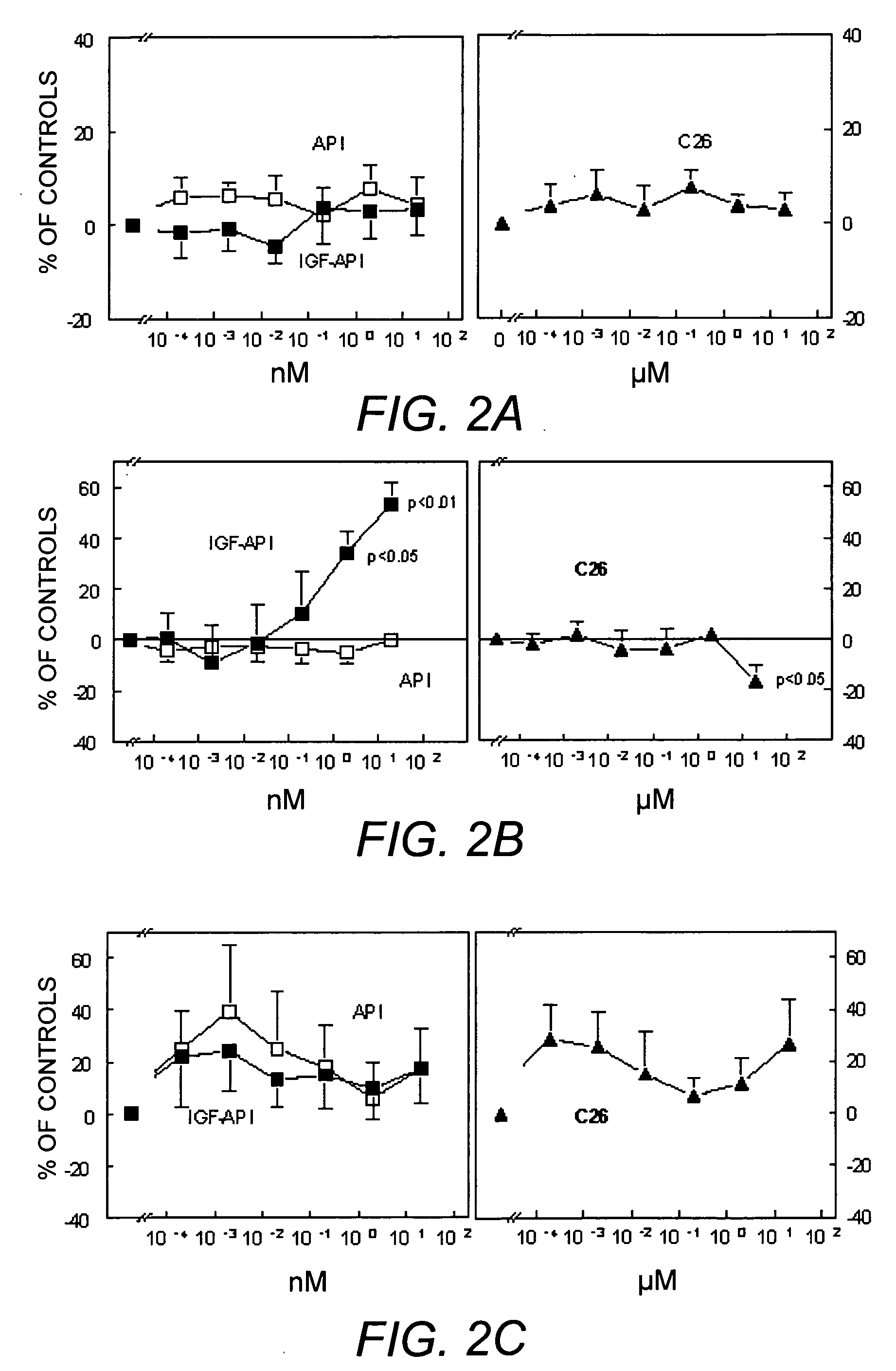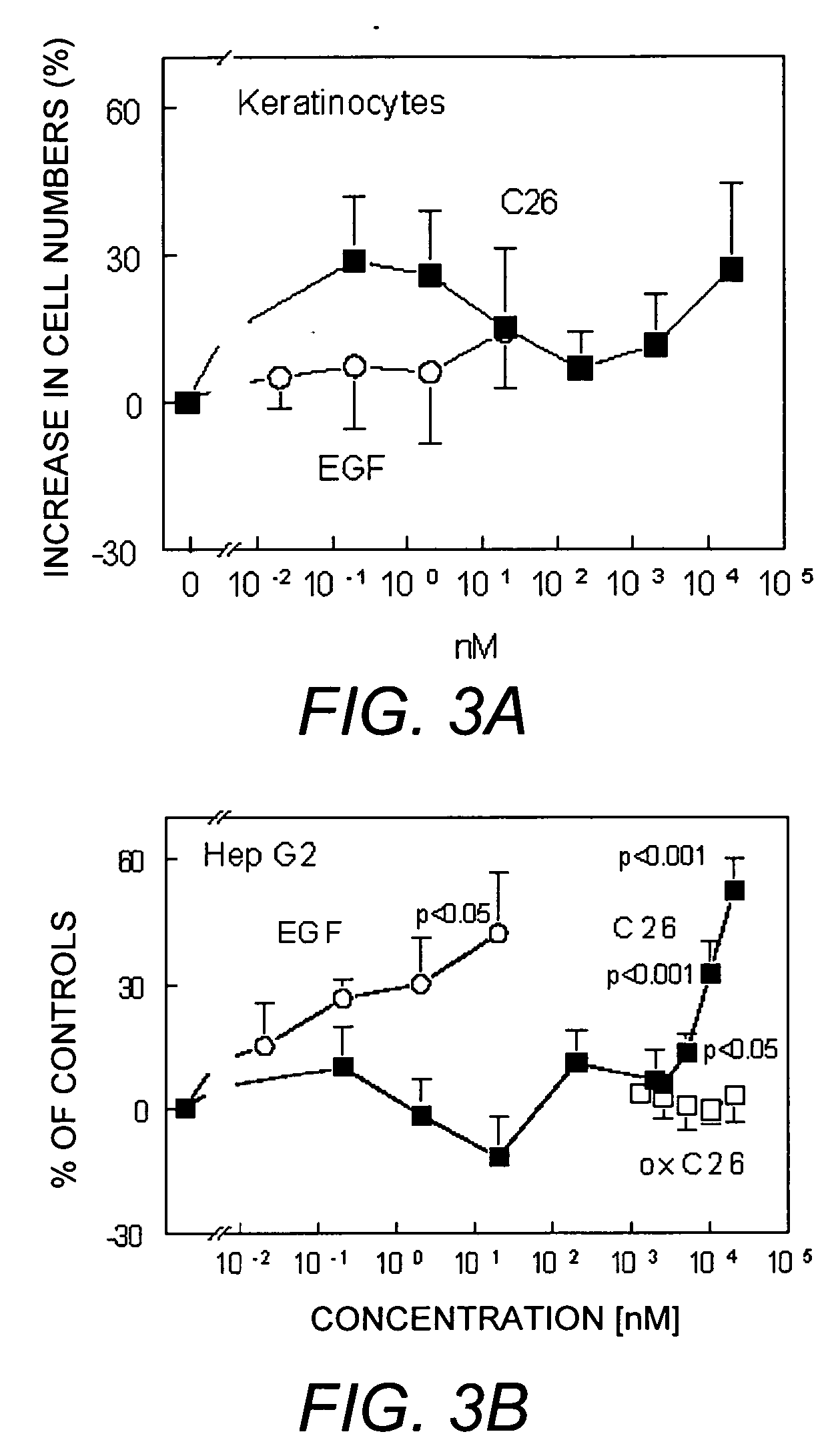Agents for wound healing
- Summary
- Abstract
- Description
- Claims
- Application Information
AI Technical Summary
Benefits of technology
Problems solved by technology
Method used
Image
Examples
example 1
Recombinant Protein Production
[0049] Recombinant proteins expressed herein included the C-terminal 26 amino acid residues of API (SEQ ID NO:2), API itself, and an IGF I-API fusion protein (SEQ ID NO:3). The IGF I-API fusion protein was derived by inserting the API sequence into the a synthetic bombyxin-IGF 1 fusion protein construct known as BIGFI (GenBank Accession No. AY380807; Sandoval, et al. (2003) Biochem. Pharmacol. 65:2055-2063). Accordingly, with reference to SEQ ID NO:3, amino acids 7-74 are identical to human IGF-I (i.e., amino acid residues 51 to 118 as found in GenBank Accession No. X00173); amino acids 75-87 of are a flexible poly-glycine linker; amino acid residues 88-91 correspond to amino acids encoded by the multiple cloning site of BIGFI; amino acids 92-485 encompass the amino acid sequence of API (see, e.g., Zhu, et al. (1987) Biochem. J. 246:25-36); amino acid residues 442 and 449 correspond to positions 351 and 358 of API, wherein the methionines of the active...
example 2
An In Vitro Model of Wound Healing
[0052] Wound healing was measured using an art-established monolayer cell culture method (Nwomeh, et al. (1998) supra). Cells to be studied were plated in 48-well tissue culture plates at a cell density appropriate for obtaining confluent monolayers after one day in culture. Circular wounds were made in the center of the wells by placing a siliconized 200 μL tip into the well and lifting the cells from the plastic by applying suction. The successful creation of wounds was analysed using a phase contrast microscope. Cells were subsequently treated with control media or media containing the factors to be tested. The size of the wounds was immediately recorded for each well. The wounds were large enough to allow for a long-term incubation thereby improving the accuracy of the determinations. After one or two days in culture (depending on the cells studied), the size of the wounds was measured again. Wound dimensions were evaluated with a Leica MZFL11 ...
example 3
Cell Proliferation Assays
[0054] The effects of IGF-API, API and C26 on cell proliferation were also evaluated using the art-established Alamar blue technique developed for hematopoietic cells or endothelial cells (DiFalco, et al. (1997) Biochem. J. 326:407-13; DiFalco & Congote (2002) Cytokine 18 (1):51-60; Sandoval, et al. (2002) supra). Five thousand cells per well were plated in 96-well plates and grown over night in complete cell culture medium. The cells were subsequently starved for one day in serum-free medium supplemented with 5 μg / mL bovine transferrin and 200 μg / mL fatty-acid free, tissue culture-tested, bovine serum albumin and incubated for two days in the presence of the API derivatives indicated. For experiments with the hepatoma cell line, Hep G2, only 3000 cells were plated per well.
[0055] Cell proliferation with EGF and C26 was also analysed for keratinocytes and Hep G2 cells. The number of experiments using keratinocytes with EGF was five, and 10 to 11 with C26. ...
PUM
 Login to View More
Login to View More Abstract
Description
Claims
Application Information
 Login to View More
Login to View More - R&D
- Intellectual Property
- Life Sciences
- Materials
- Tech Scout
- Unparalleled Data Quality
- Higher Quality Content
- 60% Fewer Hallucinations
Browse by: Latest US Patents, China's latest patents, Technical Efficacy Thesaurus, Application Domain, Technology Topic, Popular Technical Reports.
© 2025 PatSnap. All rights reserved.Legal|Privacy policy|Modern Slavery Act Transparency Statement|Sitemap|About US| Contact US: help@patsnap.com



